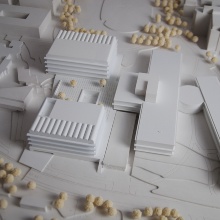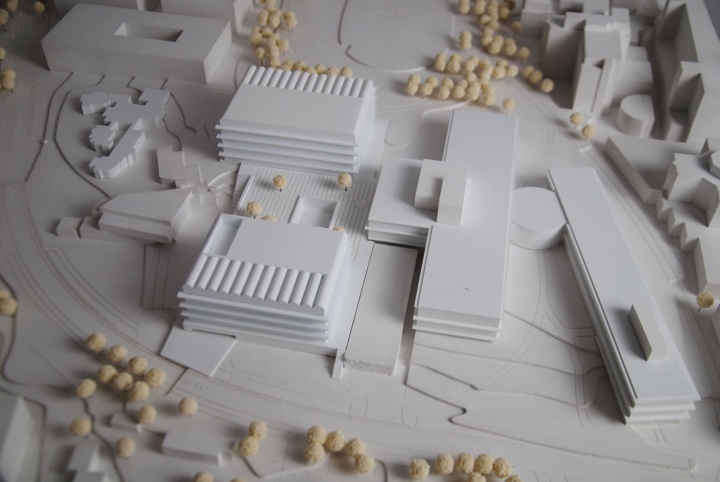The winners of the design competition for the new bioengineering building on the University of Stuttgart’s Vaihingen Campus have been chosen. The design by the kleyer.koblitz.letzel.freivogel Gesellschaft von Architekten mbH, Berlin was awarded the 1st prize. A 2nd prize went to Sweco GmbH – Sweco Architects, Munich, and a 3rd prize was awarded to Schuster Pechthold Schmidt Architekten GmbH, Munich. A recognition was given to HDR GmbH, Munich.
Chaired by the Stuttgart architect Markus Hammes, the winning design was selected from 16 entries. In the jury’s opinion, the awarded entries show sustainable solutions for the needs of bioengineering. Besides spatial synergy effects and pathways, optimized process flows were achieved that contribute to an improvement and strengthening of the individual functional areas. In addition, the goals for sustainability and climate protection, as well as the reduction of the carbon footprint, were included in the planning of the new building and implemented in its design. Members of the jury included representatives from the Ministry of Finance, the Ministry of Science, the University of Stuttgart, the Government Office of Assets and Construction in Baden-Württemberg, and the City of Stuttgart as well as self-employed architects.
An important milestone
The new bioengineering building is an important milestone on the way to the renovation of the Natural Sciences Center (NWZ) of the University of Stuttgart. Having been in use for almost 50 years, the renovation of the two buildings is urgently necessary, but cannot be carried out during ongoing operation. In the first step, the majority of the users of the NWZ II are therefore to be housed in replacement buildings so that the NWZ building can be completely renovated and then reoccupied.
The bioengineering institutes, which are currently spread across the two campuses in Vaihingen and the city center, can now be brought together under one roof in the new building. In the first construction phase, the Institute of Biomaterials and Biomolecular Systems (IBBS) will be first to move into the new building, followed by laboratories of the Institute of Sport and Movement Science (INSPO). With the implementation of the second construction phase, which has already been taken into account in the competition as an idea for urban planning, the concentration of all bioengineering institutes on the Vaihingen Campus will be complete.
Expert Contact:
Annette Mauser, University of Stuttgart, Division 8, phone: +49 711 685 81075, E-Mail



